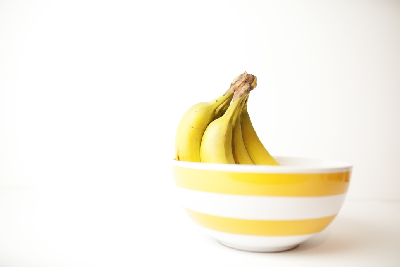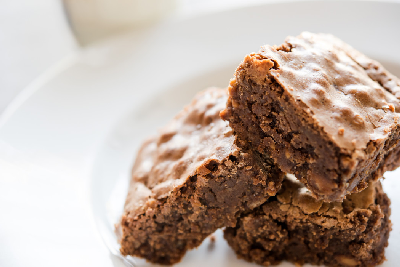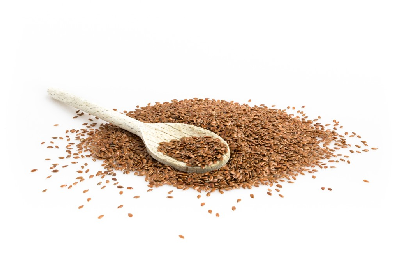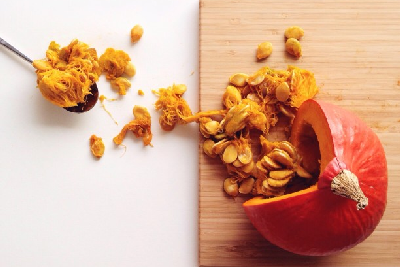Fresh-baked cookies, cakes, and pies may be the stuff of holiday dreams, but the sugar and fat that come with them are nightmares for those trying to eat healthier.
 Fear not! With smart ingredient swaps, it’s possible to slash saturated fat, sugar, and calories in many baked goods without sacrificing flavor or texture. With the help of Aramark Healthcare registered dietitian (RD) Adriana Salmon (photo), we’ve come up with our top tips for lightening up your favorite homemade treats.
Fear not! With smart ingredient swaps, it’s possible to slash saturated fat, sugar, and calories in many baked goods without sacrificing flavor or texture. With the help of Aramark Healthcare registered dietitian (RD) Adriana Salmon (photo), we’ve come up with our top tips for lightening up your favorite homemade treats.
Remember, with these swaps, it doesn’t have to be all or nothing. Don’t start with a full swap-out! Try replacing just a portion of the swapped ingredients. See how you like it, and swap more next time until you find the perfect mix.
Swap #1: The Applesauce of My Eye
Sugar is the standard go-to for baked goods, but there are savvier ways to sweeten. Unsweetened applesauce takes advantage of the naturally occurring sugar in apples. You won’t miss the processed white stuff, and, head to head, it has about 700 fewer calories per cup. Those are serious calorie savings.
Conversion: Use 1 cup unsweetened applesauce for 1 cup sugar. Note: With this swap you’ll need to fine-tune the amount of liquid in the recipe. Typically, reducing the liquid (milk, water, etc.) by ¼ cup will do the trick. If the recipe calls for no added liquid, there’s no need to adjust.
 Swap #2: Top Banana
Swap #2: Top Banana
Say hello to moist, gooey texture. “Bananas are not only rich in key nutrients, such as potassium and vitamin B6, but they are also a sweet, non-fat alternative to butter and oil,” says Adriana. The natural sweetness also means you can use less sugar. This switch works best in cookies, brownies, pancakes, and muffins.
Conversion: Use 1 cup mashed banana (the riper the better!) in place of 1 cup melted butter or oil.
Swap #3: Gettin’ Figgy With It
Prunes are a nutrition powerhouse—turns out they’re baking wonders, too. Same goes for figs, which offer fiber and vitamin B6. “Use dried fig or prune purée instead of margarine or butter in darker-colored baked goods like brownies, chocolate cookies, and cakes to lower the fat content and add nutrients,” Adriana recommends. “It’s a swap that can cut hundreds of calories from your recipe.”
Conversion: Use ½ cup prune or dried fig purée in place of 1 cup margarine or butter. Make your own by blending 1 cup whole dried figs or pitted prunes with 6 tablespoons hot water.
 Swap #4: Bean There, Done That
Swap #4: Bean There, Done That
Who knew puréed black beans could replace white flour? Black beans add protein and fiber, and they can also help make a recipe gluten-free. It works especially well in chocolate brownie recipes, helping you achieve a rich, velvety texture.
Conversion: Use 1 cup black bean purée (about one 15-ounce can, drained and rinsed) for 1 cup white flour.
Swap #5: First Nibs
Cacao is the purest form of the cocoa bean, minimally processed and crushed into bits. High in both fiber and antioxidants, cacao nibs have all the benefits of dark chocolate, without the added sugar. These deliciously nutritious little morsels will add intense chocolate flavor plus a subtle, nutty-tasting crunch.
Conversion: Simply replace chocolate chips with an equal amount of cacao nibs and enjoy!
Swap #6: Just the Flax
Vegans know and love this trick for replacing eggs that can turn a regular cookie into a super-healthy treat. Explains Adriana: “Flax is a great way to boost fiber and omega-3’s when you’re baking. ‘Flax eggs’ have a nutty flavor, so they are best used in recipes such as muffins and oatmeal cookies.”
Conversion: To replace one egg, add 2½ teaspoons ground flaxseed to 3 tablespoons water and whisk until it becomes gel-like. Let mixture set in the fridge for 5-10 minutes.
Swap #7: Greek Culture
If your recipe calls for oil or sour cream, try replacing it with “a high-protein alternative such as Greek yogurt,” suggests Adriana. Not only will you get a protein boost, but Greek yogurt is a rich source of calcium, too. Just remember to go for the plain, non-flavored variety to avoid added sugars.
Conversion: It’s not always a one-to-one ratio, so this swap requires some experimenting. In general:
- 1 cup sour cream = 1 cup Greek yogurt
- 1 cup butter = ½ cup butter + ½ cup Greek yogurt
- 1 cup oil = ¾ cup Greek yogurt
- 1 cup heavy cream = ½ cup heavy cream + ½ cup Greek yogurt
 BONUS TIP: Attention quick bread and muffin lovers! Adding in vegetables (think grated zucchini and carrots, or pureed cooked pumpkin or sweet potato) is another way to up the nutrients in your baked goods. Look for specific recipes or try swapping them in like you would with mashed bananas.
BONUS TIP: Attention quick bread and muffin lovers! Adding in vegetables (think grated zucchini and carrots, or pureed cooked pumpkin or sweet potato) is another way to up the nutrients in your baked goods. Look for specific recipes or try swapping them in like you would with mashed bananas.
Note: Since everyone’s health history and nutritional needs are so different, please make sure that you talk with your doctor and a registered dietitian to get advice about the diet and exercise plan that‘s right for you.

